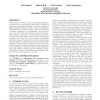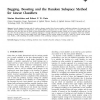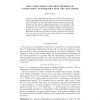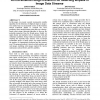21 search results - page 2 / 5 » Subclasses of the Weakly Random Reals |
92
Voted
ATAL
2009
Springer
15 years 7 months ago
2009
Springer
Game-theoretic solution concepts, such as Nash equilibrium, are playing an ever increasing role in the study of systems of autonomous computational agents. A common criticism of N...
128
Voted
PAA
2002
15 years 9 days ago
2002
: Recently bagging, boosting and the random subspace method have become popular combining techniques for improving weak classifiers. These techniques are designed for, and usually ...
APAL
2010
15 years 24 days ago
2010
The computable Lipschitz reducibility was introduced by Downey, Hirschfeldt and LaForte under the name of strong weak truthtable reducibility [6]. This reducibility measures both t...
107
Voted
SAC
2003
ACM
15 years 6 months ago
2003
ACM
DNA microarray hybridisation is a popular high throughput technique in academic as well as industrial functional genomics research. In this paper we present a new approach to auto...
111
Voted
ICTAI
2008
IEEE
15 years 7 months ago
2008
IEEE
In this paper, we present a purely incremental, scalable algorithm for the detection of elliptical shapes in images. Our method uses an incremental version of the Random Hough Tra...




